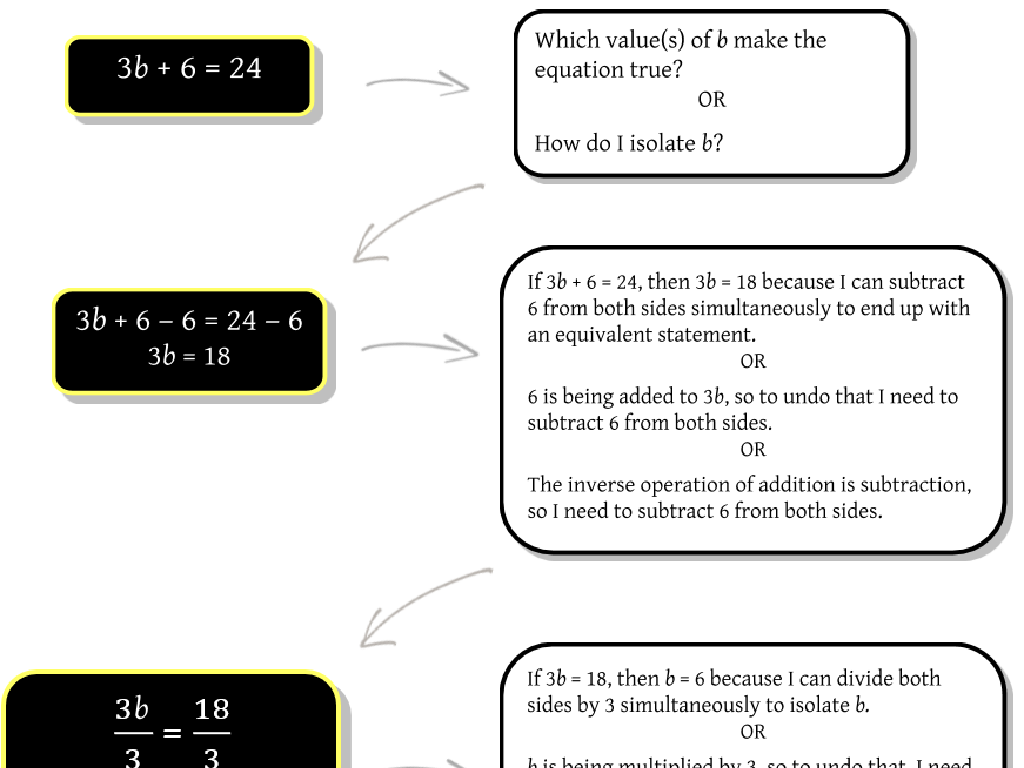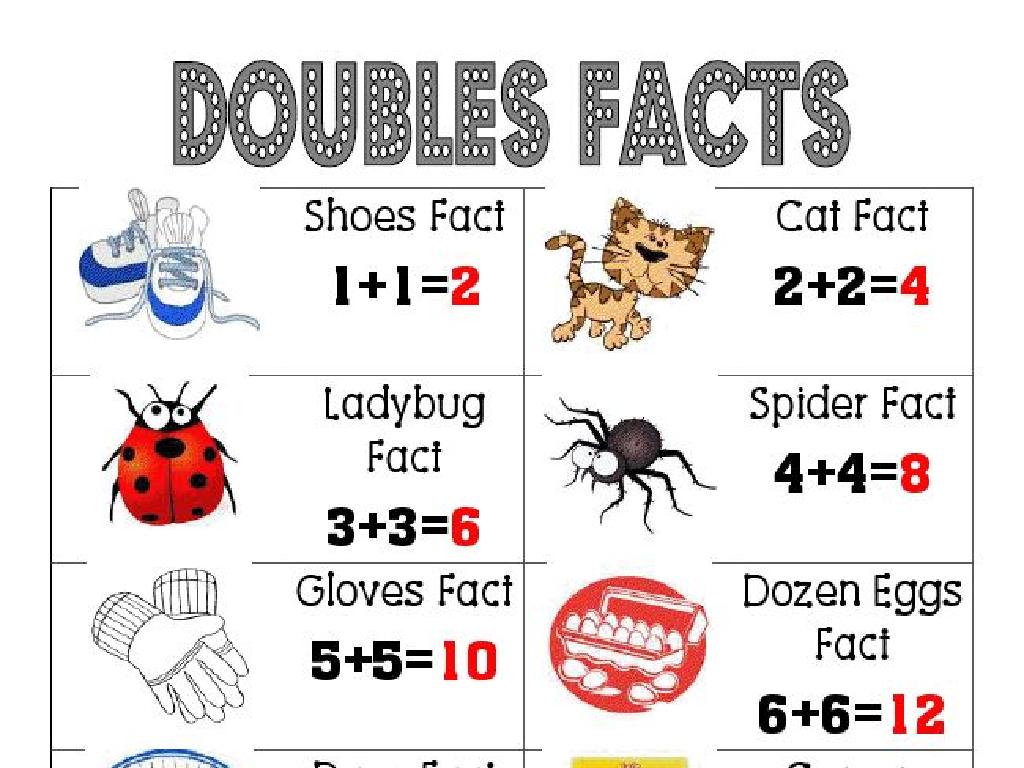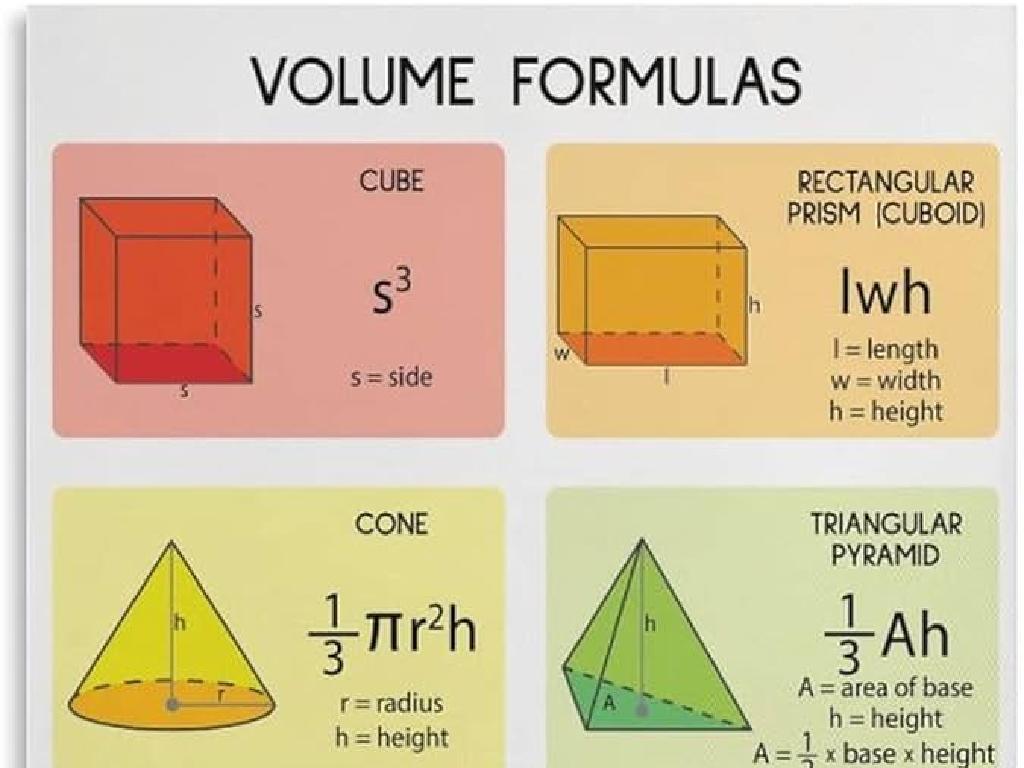Divide Unit Fractions And Whole Numbers
Subject: Math
Grade: Fifth grade
Topic: Divide Unit Fractions And Whole Numbers
Please LOG IN to download the presentation. Access is available to registered users only.
View More Content
Welcome to Fractions!
– Recap: What are fractions?
– Fractions represent parts of a whole.
– Define: What is a unit fraction?
– A unit fraction has 1 as the numerator.
– Fractions in daily life
– Used in cooking, budgeting, and time management.
– Practice dividing fractions
|
Begin with a brief review of fractions to ensure students recall that fractions represent parts of a whole. Introduce the concept of unit fractions, emphasizing that they have a numerator of 1, which makes them the basic building blocks of other fractions. Discuss the relevance of fractions in everyday life, such as in recipes, dividing money, or understanding hours and minutes. Conclude with examples of dividing unit fractions by whole numbers and vice versa to demonstrate practical applications. Encourage students to think of situations where they might need to use this skill and prepare to guide them through practice problems in the following class.
Understanding Division with Fractions
– Division as equal sharing
– Division splits things into equal parts
– Dividing whole numbers
– How to divide a number by another number
– Division meets fractions
– Splitting a whole into unit fractions
– Real-world fraction division
– Examples: pizza slices, sharing candies
|
This slide introduces the concept of division as a method of sharing equally among a number of parts, which is a foundational skill in mathematics. Begin by explaining division with whole numbers as students are familiar with it. Then, transition to how division can be applied to fractions, specifically unit fractions, which are fractions with a numerator of 1. Use relatable examples such as dividing a pizza into equal slices or sharing a bag of candies among friends to illustrate the concept. Ensure to demonstrate the process step-by-step, and prepare to answer questions students may have about dividing fractions by whole numbers and vice versa.
Dividing Whole Numbers by Unit Fractions
– Understanding division by unit fractions
– Dividing by a fraction means finding how many of these fractions fit into the whole.
– Using models to visualize division
– Draw a circle (pizza) and divide it into equal parts to see the division.
– Example: Dividing 1 by 1/4
– How many 1/4 slices can you make from a whole pizza?
|
This slide introduces the concept of dividing whole numbers by unit fractions. Start by explaining that dividing by a fraction is like asking ‘How many of these fractions make up the whole?’ Use visual aids, such as pie models or bar diagrams, to help students see the division process. For example, if we divide 1 whole pizza into 1/4 slices, we can fit 4 slices of 1/4 each to make up the whole pizza. This visual representation helps students grasp the concept that dividing by a unit fraction essentially means multiplying by its reciprocal. Encourage students to draw their own models and work through the example provided to solidify their understanding.
Dividing Unit Fractions by Whole Numbers
– Understanding inverse operations
– Inverse of multiplication is division
– Example: Dividing 1/4 by 3
– 1/4 ÷ 3 equals 1/4 times 1/3 or 1/12
– Using multiplication to divide
– Multiply by the reciprocal of the whole number
– Practice with different fractions
– Try dividing 1/5 by 4 or 1/2 by 6
|
This slide introduces the concept of dividing unit fractions by whole numbers. Begin by explaining inverse operations, highlighting that division is the inverse of multiplication. Use the example of dividing 1/4 by 3 to show how to turn division into multiplication by the reciprocal of the divisor. Emphasize that multiplying by the reciprocal is a reliable method for dividing fractions by whole numbers. Provide additional practice problems for students to apply this method, such as dividing 1/5 by 4 or 1/2 by 6, to reinforce the concept.
Let’s Practice Dividing Fractions and Whole Numbers!
– Divide 5 by 1/2
– How many halves are in 5? Think of it as 5 ÷ (1/2).
– Divide 1/3 by 6
– How many times does 1/3 fit into 6? Imagine dividing a pie into 6 slices.
|
This slide is designed for a class activity where students will engage in solving fraction division problems. For Problem 1, guide the students to understand that dividing by a fraction is the same as multiplying by its reciprocal. Therefore, 5 ÷ 1/2 is the same as 5 × 2/1, which equals 10. For Problem 2, explain that dividing a fraction by a whole number is like asking how many times the fraction fits into the whole number. So, 1/3 ÷ 6 can be thought of as (1/3) × (1/6), which equals 1/18. Encourage students to visualize these problems with real-life examples, such as cutting a cake into slices. Provide additional practice problems for students who finish early or need more challenge.
Class Activity: Fraction Division Relay
– Divide into teams for the relay
– Each member solves a step
– Work together to finish first
– Winning team gets a prize!
|
This activity is designed to encourage teamwork and understanding of dividing unit fractions by whole numbers. Organize the class into small groups and give each team a set of division problems involving unit fractions and whole numbers. Each team member will be responsible for one step in the division process. This could involve identifying the reciprocal of the unit fraction, multiplying the whole number by this reciprocal, or simplifying the result. The first team to complete all problems correctly wins a small reward. Make sure to circulate and offer guidance as needed. Possible variations of the activity could include a mix of different types of problems, timed rounds, or a ‘relay race’ where students physically move to a station to complete their step.
Wrapping Up: Fractions & Homework
– Review of fraction division
– Why mastering this is key
Understanding fractions is crucial in math and real-life problems.
– Homework: Worksheet practice
Complete the provided worksheet to practice dividing unit fractions by whole numbers.
– Bring questions next class
We’ll address any difficulties in our next session.
|
As we conclude today’s lesson on dividing unit fractions by whole numbers, it’s important to recap the steps we’ve learned. Emphasize the importance of mastering this concept as it’s not only vital for higher math but also for practical applications like cooking or dividing things equally. For homework, students are assigned a worksheet that provides additional practice to reinforce today’s lesson. Encourage students to attempt all problems and bring up any questions or challenges they encounter to the next class. This will help identify areas that may need further clarification and ensure a solid understanding of the concept.





